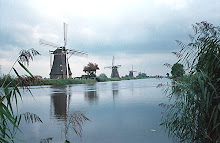The Archaeological Site of Al-Hijr (Madâin Sâlih) is the first UNESCO World Heritage property to be inscribed in Saudi Arabia. Formerly known as Hegra it is the largest conserved site of the civilization of the Nabataeans south of Petra in Jordan.
Al-Hijr is a major site of the Nabataean civilisation, in the south of its zone of influence.
The Nabataeans were an ancient Semitic people, Arabs of southern Jordan, Canaan and the northern part of Arabia.
Their oasis settlements in the time of Josephus gave the name of Nabatene to the borderland between Syria and Arabia, from the Euphrates to the Red Sea.
vrijdag 10 oktober 2008
woensdag 25 juni 2008
Nearly 50 new sites nominated to join the UNESCO World Heritage List
The committee that considers requests for inscription on the United Nations Educational, Scientific and Cultural Organization’s World Heritage List will have 47 nominated sites to choose from when it meets for its annual session next month in Canada.
UNESCO announced last week the nominations comprise 13 natural sites and 34 cultural sites, including two that cross national boundaries, according to a press release issued by UNESCO ahead of the nine-day World Heritage Committee meeting, scheduled to start in Québec on 2 July.
The nominating countries include five States that have no sites inscribed on the World Heritage List: Kyrgyzstan, Papua New Guinea, San Marino, Saudi Arabia and Vanuatu.
UNESCO said the committee would also scrutinize the state of conservation of 30 sites that have been placed on the List of World Heritage in Danger because of problems such as pollution, pillaging, the impact of natural disasters or poorly managed mass tourism.
Those sites include the cultural landscape of the Dresden Valley in Germany, which may be deleted from the World Heritage List if the 21-member committee determines that the building of a bridge in the heart of the landscape warrants the move.
Currently there are 851 wonderful and amazing sites of “outstanding universal value” in 141 countries that have been inscribed on the World Heritage List.
Each year sites are added after applications are first reviewed by either the International Council on Monuments and Sites or the International Union for Conservation of Nature.
UNESCO announced last week the nominations comprise 13 natural sites and 34 cultural sites, including two that cross national boundaries, according to a press release issued by UNESCO ahead of the nine-day World Heritage Committee meeting, scheduled to start in Québec on 2 July.
The nominating countries include five States that have no sites inscribed on the World Heritage List: Kyrgyzstan, Papua New Guinea, San Marino, Saudi Arabia and Vanuatu.
UNESCO said the committee would also scrutinize the state of conservation of 30 sites that have been placed on the List of World Heritage in Danger because of problems such as pollution, pillaging, the impact of natural disasters or poorly managed mass tourism.
Those sites include the cultural landscape of the Dresden Valley in Germany, which may be deleted from the World Heritage List if the 21-member committee determines that the building of a bridge in the heart of the landscape warrants the move.
Currently there are 851 wonderful and amazing sites of “outstanding universal value” in 141 countries that have been inscribed on the World Heritage List.
Each year sites are added after applications are first reviewed by either the International Council on Monuments and Sites or the International Union for Conservation of Nature.
Labels:
dresden,
kyrgyztan,
papua new guinea,
san marino,
saudi arabia,
unesco,
vanuatu
Abonneren op:
Reacties (Atom)
.jpg)